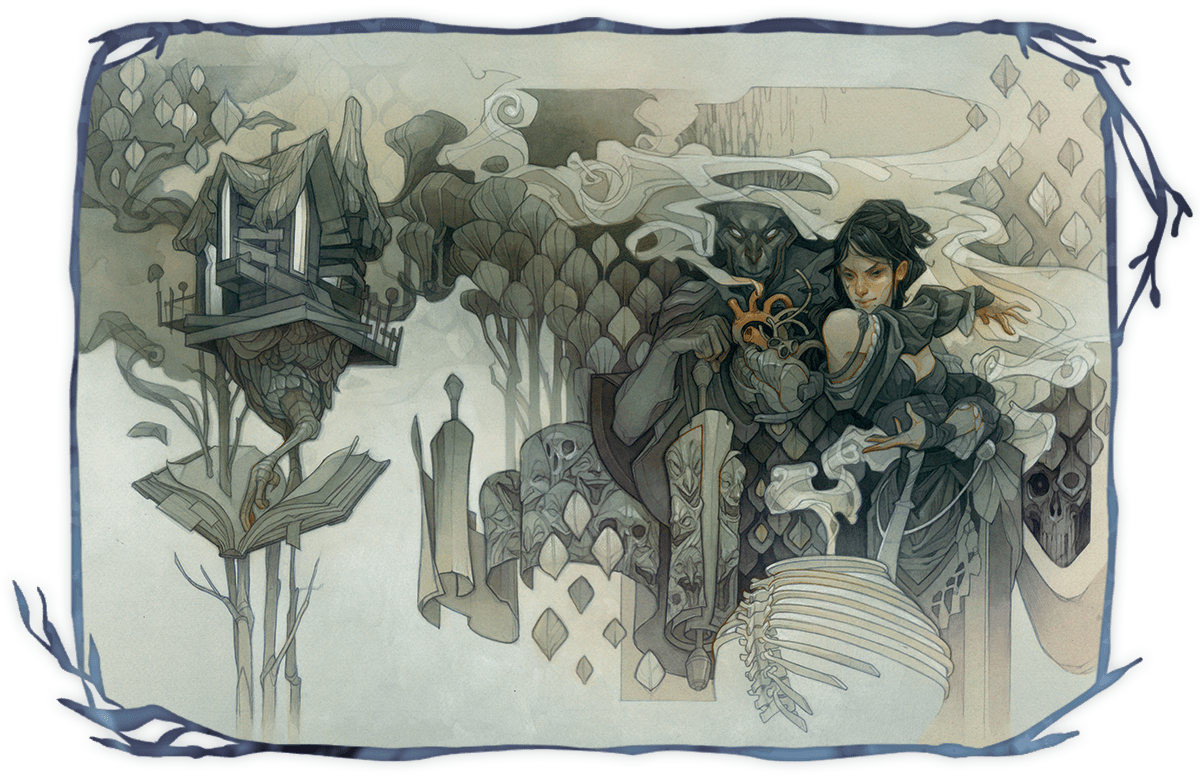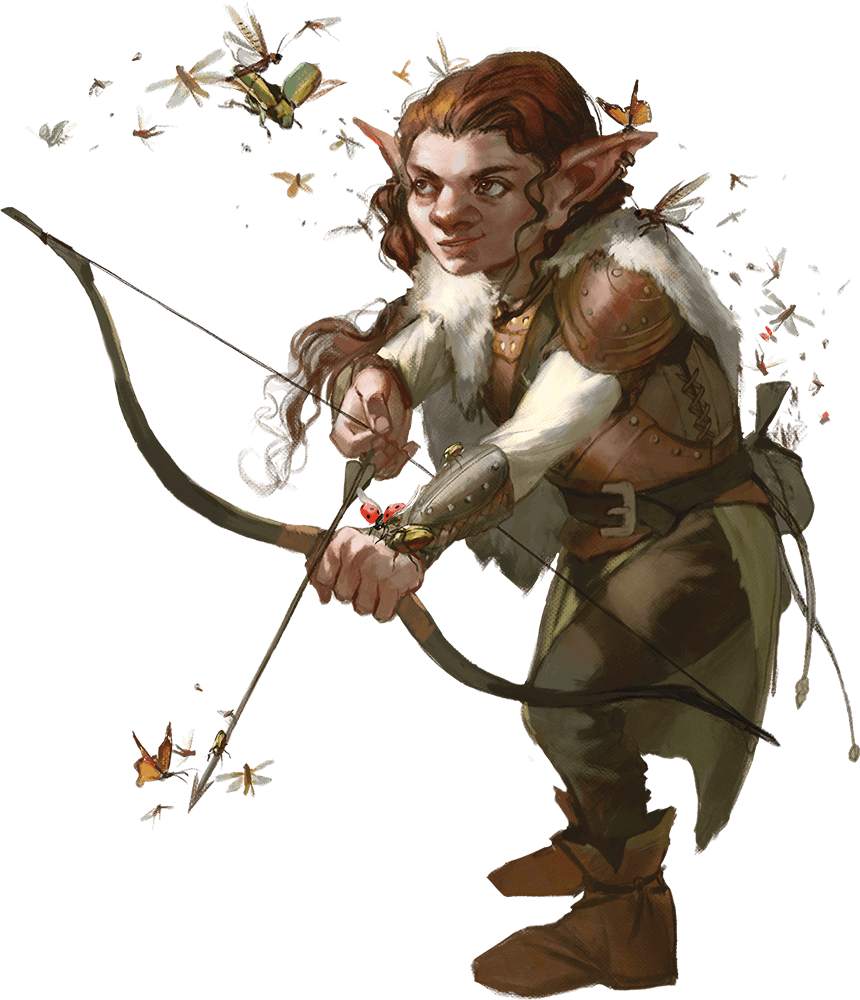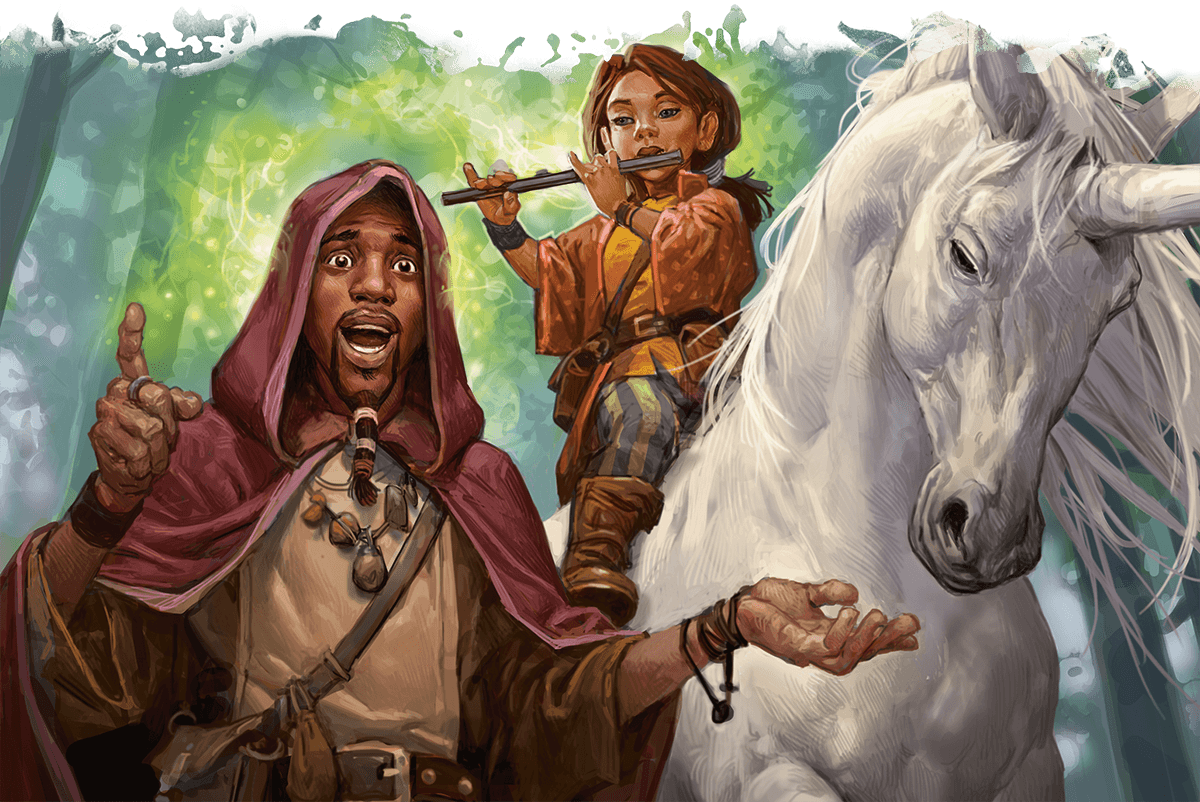Something for Everyone
Wizards of the Coast (WotC) launches several Dungeons & Dragons (D&D) supplements a year, and 2020 alone saw the release of Explorer's Guide to Wildemounte, Mythic Odysseys of Theros, Icewind Dale: Rime of the Frostmaiden, and now Tasha's Cauldron of Everything. While most of these releases are designed as either adventures or settings guides, Tasha's Cauldron of Everything is one of the rare pure rules supplements to the game. The last of these released was Mordenkainen's Tome of Foes, which while expanding on player races, consisted primarily of lore and monsters for Dungeon Masters to use in their encounters and setting design. We have to go all the way back to 2017's Xanathar's Guide to Everything to find a truly comparable supplement to what we have here today in Tasha's Cauldron of Everything. New spells, new subclasses, rereleases of both, new items, feats, and Dungeon Master (DM) tools all mix together in a brew that smells sweeter than its title would suggest.
 The special alternative cover design is already hard to find
The special alternative cover design is already hard to find
We Put Options in Your Player Options
Wizard's of the Coast hasn't had the most banner year when it comes to controversies. Pretty much all editions of the game Dungeons & Dragons use the terms "race" and "racial features" in ways that would be highly disturbing in any polite conversation today. On top of that, with the advent of the Black Lives Matter movement we saw former freelancer Orion D. Black, a person of color, leave due to allegations of misconduct and stolen controversies while high profile Magic: The Gathering player Zaiem Beg straight up called the company racist in an open letter to the community after WotC released their Black Lives Matter solidarity statement. WotC has since apologized and has made several errata changes to existing content across their product lines in an attempt to remove and/or minimize racist undertones (and sometimes overtones) and made several different public apologies.
Time will only tell if the proper leadership and employee changes happen within the company itself, but I can't help but feel the entire "Customizing Your Origin" section is in direct response to some of these issues. It is a welcome change, allowing far greater flexibility when creating Player Characters with migratory stat bonuses and the rules regarding swapping out race based languages and proficiencies. Now you can have an earth genasi with a bonus to dexterity, instead of strength, and make that earth gliding Rogue you've always wanted. Or make an elven crafter who spent time learning different crafts or trades instead of gaining proficiencies in longswords and bows. This maleability not only helps remove some of the racial stigmas historically sown throughout the game, but vastly widens the effectiveness of class and race builds within the game for players who care about such things.
Rules have also been added if you're not happy with what you've picked as your subclass or if you thought a skill might be more useful than it has been. Now you can train out of your existing subclass and into a new one, or a narrative beat might allow for a quicker change. Most spell casting classes had to pick cantrips and hope they would be useful for the rest of their campaign. Now optional class rules allow for changing these as infrequently as when a character level up gains an ability score increase to as frequently as every long rest.
Player Classes - 201
 The Swarmkeeper has a number of interesting battlefield control and movement options
The Swarmkeeper has a number of interesting battlefield control and movement options
New in Tasha's Cauldron of Everything, all the classes from the Player's Handbook (PHB) now have additional optional features which supplement or replace existing features. The Sorcerer gets a few more things to do with their sorcery points both in and out of battle, all caster classes from the PHB gain some more spells, and the Monk gets several interesting new abilities to help elevate the class as a whole.
None needed this more than the Ranger class, whose Beast Master subclass is often lauded as the worst possible selection in the game. Several new abilities can now replace the ribbon features of the Ranger core class. Unfortunately Favored Foe, which works as a weaker version of the spell Hunter's Mark without expending a spell slot, is still a very poor substitute for the rarely useful Favored Enemy, which grants you bonuses against specific creature types. The Beast Master Companions option is definitely a better option than the standard animal array that the PHB version of the Ranger class could choose from, and with a willing Dungeon Master, it is very easily flavored over existing animal companions. It doesn't quite make enough changes to this subclass however to take it out of its bottom of the barrel status.
While there are a few reprints of subclasses from setting specific books (Order Domain Clerics, Bladesinger Wizards, Circle of Spores Druids, and Oath of Glory Paladins to name a few) most of them are brand new subclasses. These include the introduction of Psionics with the Psi Warrior Fighter, Way of Astral Self Monk, Aberrant Soul Sorcerer, and Soulknife Rogue. Unlike earlier Unearthed Arcana takes at these alternative magic enhanced options, these ended up being much more like existing classes. The Psi Warrior is an alternative to the Eldritch Knight, where it gains Intelligence based abilities instead of spells. It and the Soulknife also gain a special set of dice used to empower some of those abilities, often with a bonus based on the character's Intelligence modifier. All of these appear to be fun additions to the class options, and while some are obviously better than others (the Druid subclass Circle of Stars stands out as extremely potent) most seem to be great additions.
Finally, we also have the only officially added new class reprinted here along with the new Armorer subclass, Artificers. This means players picking up this book don't need to grab last year's Eberron: Rising from the Last War if they want to play one (although it and Wayfinder's Guide to Eberron are still is the only way to get a few of the available races). It is almost entirely unchanged except for the new additions, and is also the only class not to include an Optional Features section. This is likely because it's so new compared to the other classes, but if such an Optional Features section comes around for the class in the future, it will sadly require yet another purchase. Hopefully it is not locked behind an adventure or settings book like some of the other player options are.
Feats for Thought
 I'll take a side of Psionics with that
I'll take a side of Psionics with that
Probably the best put together section of the book regards the new Feats. All fifteen are useful and thematic, and many seem appropriate to take as part of a Custom Origin at level one to mechanically alter characters to fit their origins, especially if those origins involve interplanar shenanigans. Metamagic Adept, Fighting Initiate, and Artificer Initiate all grant a small piece of different classes (Sorcerer, Fighter, and Artificer respectively) to those who would like a dip without multiclassing. Crusher, Piercer, and Slasher all grant boons based on your weapon's damage type. And continuing on theme of introducing Psionics, the Telekinetic and Telepathic feats both grant abilities towards that end. Also, none of the benefits of these feats seem to scream overpowered or extremely niche to useless like many in the Player's Handbook.
Is Boring Magic an Oxymoron?
Less exciting is the spells and magic items sections of the book. A number of the spells are reprints (mostly from Sword Coasts Adventurer's Guide) that sometimes greatly reduce the spells versatility, such as with Booming Blade's change to cast on Self instead of a target within five feet. Of those remaining out of the twenty-one spells in this book, nine are summoning spells that summon one of three spirits/creatures with bonuses if cast at a higher level spell slot and function more or less identically. These are good spells as they take care of the issue regarding existing summoning spells as they don't slow down combat nearly as much by summoning only one creature, but comparing it to the closest comparison in Xanathar's Guide to Everything, which introduced dozens of new spells it feels quite lacking.
The magic items are a bit more of a mixed bag. Excellent new artifacts, like the Crook of Rao or the Teeth of Dahlver-Nar, are packed full of enough lore and dangerous decisions to power an entire campaign. On the other side, again we see a lot of items that are the same thing with a minor twist. Wizards get a specific item for each school of magic that acts as a focus and includes a lot of spells that can be swapped out for a charge and a minute of downtime. This effectively expands their already enormous magical repetoire, and this is for the class that needs it the least. Sorcerers get a similar set of items although instead of granting more spells they do something fun when using metamagic, and I believe every caster class gets an item that allows +1 through +3 to their spell attacks and saving throws, in what is the biggest change to the bounded accuracy system since the Rod of the Pact Keeper.
There's also an entire set of magically enchanted tattoos, as far as new magic items types go, they seem to generally allow abilities either tied to spells or other proficiencies/class features at the cost of attunement. This again is a way Tasha's Cauldron of Everything allows players to taste parts of classes their characters have not taken without needing to actually take levels in those classes. One thing that needs to be clarified is whether these tattoos, all of which require attunement, are compatible with wildshape and other transformative abilities. Some of them, like the Barrier Tattoo which sets or increases a character's Armor Class, could be extremely overpowered with the right class combination.
A Tool for Every Occasion
 Expanded gameplay rules and recommendations help make the DM's life a bit easier.
Expanded gameplay rules and recommendations help make the DM's life a bit easier.
Tasha's Cauldron of Everything, being a core supplement book, also contains quite a lot for Dungeon Masters. From sidekick rules for when the party needs a bit more help to Magical Phenomena like Eldritch Storms or entire Mimic Colonies there are numerous resources for the aspiring and well traveled DM. Most importantly are probably the rules for a special session to start the campaign, aka Session Zero, and the rules for 1DM:1Player games. It helps everyone get on the same page and allows for couples and other situations with low player counts to still be able to get into the game of D&D.
Rules also are written down her for Parleying with Monsters, and how and why to logically talk through what would otherwise be a perilous fight for one side, the other, or both. While more experienced DM's are already used to homebrewing these options, having codified rules and recommendations for newer DM's to say, wrap their mind around the desires of an aberration, is a much needed reprieve from what otherwise must be made up on the spot or heavily researched ahead of the game.
Finally, there's also a major sub-section regarding adding puzzles to your game. Where Xanathar's Guide to Everything expanded upon building traps from the Dungeon Master's Guide, Tasha's Cauldron of Everything expands upon puzzles and includes half a dozen handouts and thirteen example puzzles. These puzzles very in complexity and are designed to be able to plop right into any existing adventure, with ideas for hooks into the larger story your campaign is trying to tell. They in general still require a little more finessing to use than the traps in Xanathar's but are great examples of the kinds of puzzles and, maybe more importantly, how difficult these are to solve. Puzzles and traps, being a part of the exploration pillar of D&D, are unlike the social and combat pillars in that they generally require more from the player than they do from the character they're playing. Yes an eloquent and charismatic player will have an easier time with the social encounters and a tactically minded player with the combat, but the rules as they exist help the player less in the exploration side of the game. Including hints based on skill checks is a great idea, and after reading through a few of the examples in Tasha's any DM should be able to follow the structure to create their own.
Conclusion
 Genie Patron Warlocks are one of the more interesting new subclasses
Genie Patron Warlocks are one of the more interesting new subclasses
How does Tasha's Cauldron of Everything stack up? In the end we have a load more subclasses, a number of good new feats and amazing character build changes. Optional rules that finally try and sometimes fail to fix problems with some existing classes, and a lack of variety with the new spells and magic items does bring the book down a bit. The additional Dungeon Master Tools brings it right back up though. I can safely say I'd recommend this as the third book behind the Player's Handbook and Xanathar's Guide to Everything for players looking to expand their available class options and likely the fourth book behind the Player's Handbook, Dungeon Master's Guide, and Monster Manual for Dungeon Masters, tying with Xanathar's Guide to Everything. For DM's trying to pick between Tasha's and Xanathar's I would base it entirely around whether you have a small party or not. Alternatively, if you have the Essentials Kit (see mlev's review here) and already have some sidekick rules available, you may find more value out of Xanathar's.

